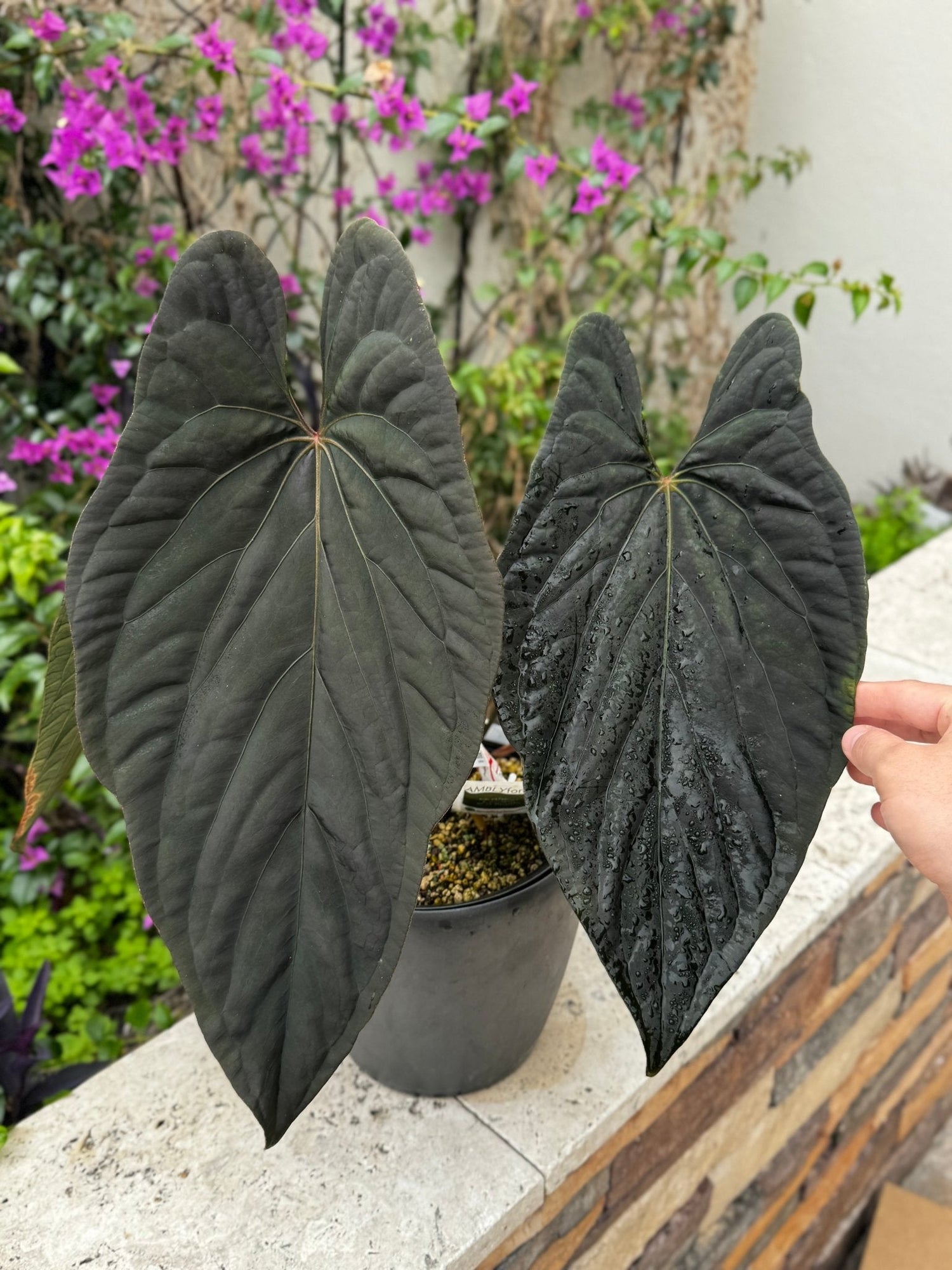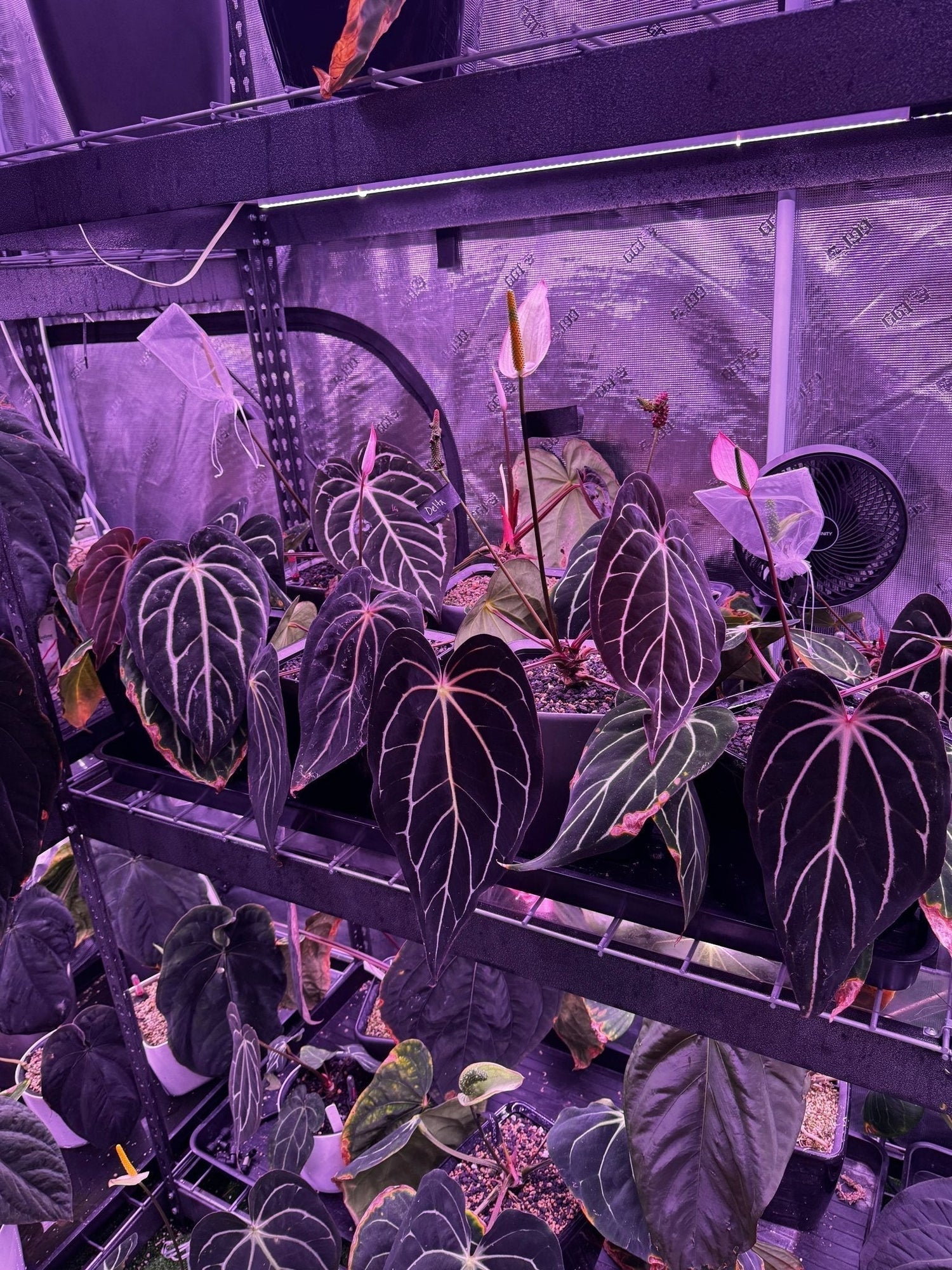About
Anthurium antolakii (formerly known as black velvet eastern panama or BVEP) is a recently discovered/described velvet anthurium from eastern Panama. The plant is notable for its blood red to sometimes nearly black emergent leaves and nearly black hardened leaves on the nicest individuals. They superficially resemble Anthurium papillilaminum but can be differentiated based on a few key features. These include a more compact overall growth habit, thicker leaves, lack of red/pink coloration on the abaxial leaf surface (even in specimens with elite pigmentation, whereas even an average pap will have some) and in mature specimens, extra basal veins compared to paps (most very mature paps have only 4 sometimes 5 and antolakii typically have 5 or more). The veins also tend to be paler and thinner than papillilaminum which is particularly noticeable near the sinus.
Growing conditions/care
I do not provide any special care for antolakii compared to my average velvet anthurium. I grow them semi hydroponically in pon with self watering planters. I give them light levels comparable to what i provide my paps which is probably around 300 fc for mature plants. I have them growing in both my warmer tent which peaks around 83F during the day and my cooler tent that peaks around 78F during the day and they seems to grow happily in both. Compared to paps I find them a little more difficult to hold many perfect leaves but nowhere near as fussy as something like dressleri or kunayalense. Some individuals seem to be prone to unexplained crashes particularly after being cut (which I guess wouldn’t be unexplained), but I haven’t experienced that with my personal plants from my breeding lines.
Hybridization/Breeding
Why antolakii
Antolakii’s compact growth habit and dark foliage make it an excellent hybrid parent, especially for tent growers with limited space (just like dressleri and carlablackiae). The deeply pigmented emergents have a very interesting depth with an almost holographic quality to them as they expand which also can be inherited by their hybrid offspring.
What I’m selecting for
As with any dark velvet species I’m obviously selecting for dark foliage and deep emergent coloration. In antolakii I prefer the deep blood red coloration to the more dark brown/black coloration that some antolakii develop although I don’t dislike the black emergents. The red emergents tend to have a more interesting depth of color during expansion in my experience which is one of the best parts of antolakii.
As far as shaping, in general I’m selecting for rounder antolakii, however after seeing some of the interesting elongated forms in my recent round x RA1 batch I will likely make a side project line focusing on accentuating that trait as well. The round x Felix f2 plants are already showing some nice rounded leaf forms compared to the f1 cross at the same stage which is encouraging and I will also be crossing one of the rounder individuals from my round x RA1 cross with one of my favorite hold back from the round x Felix f1 batch.
As usual with any species the vein characteristics are also of huge importance to me as this has an enormous effect on the overall leaf character. Compared to species like pap, antolakii tend to have a greater number of basal veins and some more variability (they tend to have 5 or more compared to paps which mostly have 4 as i mentioned earlier). I like the look with greater vein counts as it lends that spidery appearance when combined with the lack of contrasted secondary veining on antolakii. Other factors that I look at when selecting plants would be the general pattern/spacing/distribution of the veins which can be just as impactful as the actual number of veins. The coloration of the veins can also be a little variable with some having lighter veins while other have greener veins. I prefer the lighter veins as it offers a more dramatic contrast to the dark leaf blades. They also can have some pink on them on the emergent/expanding leaf which is very striking and has shown up in some of my round x RA1 plants.





